
Zona 13: The Hidden Gem of Guatemala City
Discover Zona 13 in Guatemala City: A vibrant neighbourhood blending history, nature, and modern charm, perfect for every traveller seeking an authentic experience.
Zona 13 in Guatemala City is a treasure trove of experiences waiting to be discovered. Nestled in the heart of the city, this neighbourhood is a delightful blend of culture, history, and modernity. Whether you are a history buff, a nature lover, or someone looking to soak in local vibes, Zona 13 has something special for you. Begin your journey at La Aurora International Airport, conveniently located within Zona 13, making it the perfect starting point for your exploration. Just a short drive away, you will find the fascinating National Museum of Archaeology and Ethnology. Here, you can immerse yourself in the rich history and traditions of Guatemala, with exhibits showcasing artefacts from ancient Maya civilizations. For those who enjoy outdoor activities, the lush Parque Zoológico La Aurora provides a refreshing escape. The zoo is home to a diverse array of animal species and beautifully landscaped gardens. It's an ideal spot for families and nature enthusiasts alike. Another must-visit is the nearby Botanical Garden, which offers a serene environment perfect for a leisurely stroll amidst exotic plants and flowers. Zona 13 is also known for its vibrant local markets and eclectic dining options. Savor authentic Guatemalan cuisine at one of the many local eateries or explore the various street food stalls offering delicious and affordable treats. The neighbourhood's culinary scene is a true reflection of its cultural diversity and hospitality. In the evenings, take a leisurely walk through the tree-lined streets and discover charming shops and boutiques. Whether you are looking for unique souvenirs or just want to enjoy the local atmosphere, Zona 13 offers a delightful shopping experience. With its combination of cultural landmarks, natural beauty, and modern amenities, Zona 13 in Guatemala City is a neighbourhood that promises a memorable and enriching experience for every visitor.
Local tips in Zona 13
- Visit the National Museum of Archaeology and Ethnology early to avoid crowds and make the most of your visit.
- Carry local currency as some street food vendors and small shops may not accept credit cards.
- Wear comfortable shoes as you will be doing a lot of walking, especially in parks and gardens.
- Try the local street food but ensure it is from a busy, reputable stall to avoid any health issues.
- Check the opening hours of the zoo and botanical garden as they may vary seasonally.
Zona 13: The Hidden Gem of Guatemala City
Zona 13 in Guatemala City is a treasure trove of experiences waiting to be discovered. Nestled in the heart of the city, this neighbourhood is a delightful blend of culture, history, and modernity. Whether you are a history buff, a nature lover, or someone looking to soak in local vibes, Zona 13 has something special for you. Begin your journey at La Aurora International Airport, conveniently located within Zona 13, making it the perfect starting point for your exploration. Just a short drive away, you will find the fascinating National Museum of Archaeology and Ethnology. Here, you can immerse yourself in the rich history and traditions of Guatemala, with exhibits showcasing artefacts from ancient Maya civilizations. For those who enjoy outdoor activities, the lush Parque Zoológico La Aurora provides a refreshing escape. The zoo is home to a diverse array of animal species and beautifully landscaped gardens. It's an ideal spot for families and nature enthusiasts alike. Another must-visit is the nearby Botanical Garden, which offers a serene environment perfect for a leisurely stroll amidst exotic plants and flowers. Zona 13 is also known for its vibrant local markets and eclectic dining options. Savor authentic Guatemalan cuisine at one of the many local eateries or explore the various street food stalls offering delicious and affordable treats. The neighbourhood's culinary scene is a true reflection of its cultural diversity and hospitality. In the evenings, take a leisurely walk through the tree-lined streets and discover charming shops and boutiques. Whether you are looking for unique souvenirs or just want to enjoy the local atmosphere, Zona 13 offers a delightful shopping experience. With its combination of cultural landmarks, natural beauty, and modern amenities, Zona 13 in Guatemala City is a neighbourhood that promises a memorable and enriching experience for every visitor.
Iconic landmarks you can’t miss
Zoológico La Aurora
Experience the beauty of wildlife at Zoológico La Aurora, a top-rated zoo in Guatemala City dedicated to animal conservation and education.

Plaza Obelisco
Explore Plaza Obelisco in Guatemala City, a historic monument that symbolizes independence and cultural pride, surrounded by vibrant local life.

Plaza Berlín
Explore Plaza Berlín, a serene city park in Guatemala City, perfect for relaxation, strolls, and experiencing local culture amidst beautiful greenery.

Torre del Reformador
Discover the majestic Torre del Reformador, a historic monument in Guatemala City, symbolizing national pride and offering stunning views.

The Children's Museum of Guatemala
Explore creativity and learning at The Children's Museum of Guatemala, where interactive exhibits and fun activities await young explorers.
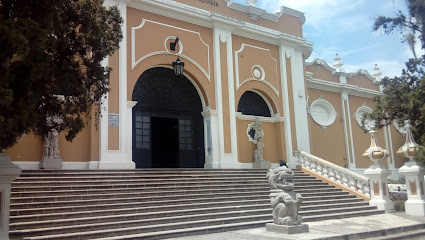
Nacional Museum of Mayan Art: Archeology and Ethnology
Explore the treasures of the Mayan civilization at the Nacional Museum of Mayan Art, a captivating journey through history and culture.

Handcrafts Market
Experience the rich culture and artistry of Guatemala at the vibrant Handcrafts Market in Guatemala City, a must-visit for authentic souvenirs.
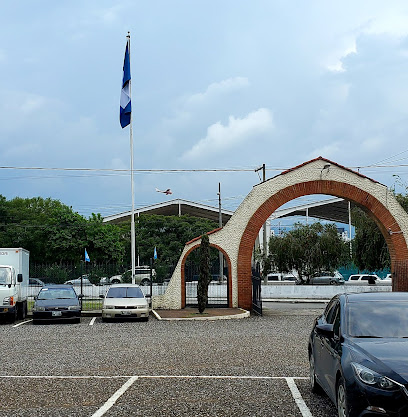
Monumento Tecún Umán
Explore the iconic Monumento Tecún Umán, a symbol of Guatemala's heritage and resilience, surrounded by stunning views and rich history.

Plaza Colombia
Explore the vibrant history and architectural beauty of Plaza Colombia in Guatemala City, a must-see landmark for every traveler.

Acueducto de la serpiente
Explore the Acueducto de la serpiente in Guatemala City, a stunning architectural marvel that showcases historical ingenuity and picturesque views.
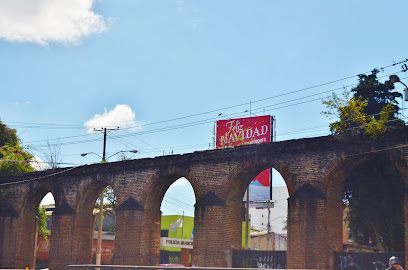
Acueducto de Pinula
Explore the Acueducto de Pinula in Guatemala, a stunning historical landmark showcasing colonial architecture and rich cultural heritage amidst picturesque landscapes.

Mural esteriores Zoologico la Aurora y 12 calle zona 13
Explore the stunning Mural Estériores in Guatemala City, a vibrant landmark reflecting the country's rich culture and artistic heritage.

Unmissable attractions to see
IRTRA Mundo Petapa
Experience the thrill of IRTRA Mundo Petapa, Guatemala's premier amusement park, filled with exciting rides, cultural experiences, and family fun.

Nacional Museum of Mayan Art: Archeology and Ethnology
Discover the captivating heritage of the Maya civilization at the Nacional Museum of Mayan Art in Guatemala City, where history and culture come alive.

Museo Miraflores
Experience the cultural depth of Guatemala at Museo Miraflores, the premier archaeological museum showcasing the region's ancient civilizations.

Plaza Colombia
Discover the charm of Plaza Colombia, a historical landmark in Guatemala City, where culture and beauty converge in a serene atmosphere.
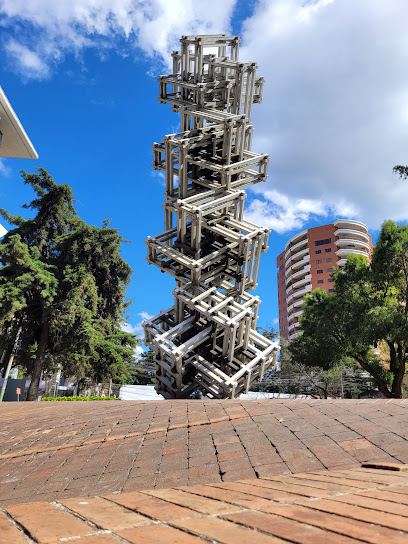
San Josemaria Escriva
Experience tranquility and spirituality at San Josemaria Escriva, a serene tourist attraction in Guatemala City, perfect for reflection and cultural enrichment.

Essential places to dine
Chonita's Grill
Experience authentic Guatemalan flavors at Chonita's Grill—where every dish tells a story of tradition and culture.

Peccato Pasta
Discover the essence of Italian cuisine at Peccato Pasta in Guatemala City—where every dish tells a delicious story.

La Barra De Don Paco
Discover authentic Spanish cuisine at La Barra De Don Paco in Guatemala City - where every dish tells a story.

El Green Restaurant
Discover exquisite Guatemalan cuisine at El Green Restaurant in Guatemala City - a culinary gem with sustainable practices and vibrant flavors.

La Reunión Food Park Zona 13
Discover delicious culinary delights at La Reunión Food Park Zona 13 in Guatemala City - a vibrant hub for food lovers with diverse tastes.

El Changarro de Don Mario.
Discover authentic Guatemalan flavors at El Changarro de Don Mario, where every dish is a celebration of local culinary traditions.
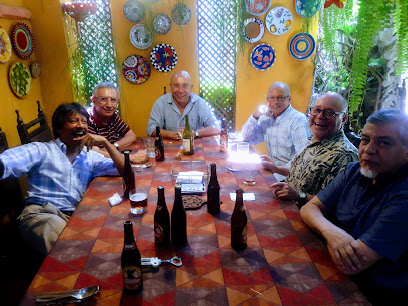
La Terrazza Italiana
Experience authentic Italian cuisine at La Terrazza Italiana in Guatemala City – where every meal feels like a culinary journey through Italy.
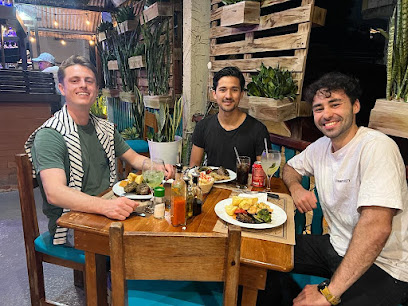
Los Panitos
Experience authentic Guatemalan cuisine at Los Panitos - where every dish is a celebration of local flavors.

Restaurante y Cevichería La Cabaña D'Francia
Discover exquisite ceviche and fresh seafood at Restaurante y Cevichería La Cabaña D'Francia in Guatemala City—where flavors meet tradition.

Dandre's Restaurante
Experience authentic Guatemalan flavors at Dandre's Restaurante in Zona 13, where tradition meets taste in every dish.

Markets, malls and hidden boutiques
Mostaza
Explore Mostaza, a trendy clothing store in Guatemala City, offering stylish apparel and accessories that reflect local culture and contemporary fashion.

Svelta Fashion
Discover the latest trends and unique styles at Svelta Fashion, a premier clothing store in Guatemala City, where local flair meets modern design.

Nina´s Boutique
Explore unique fashion at Nina's Boutique in Guatemala City, where local craftsmanship meets contemporary style for the perfect souvenir.

Plaza Triángulo
Discover Plaza Triángulo, Guatemala City’s premier shopping mall, blending local culture with international brands for an unforgettable retail experience.

Artisan Market, contiguous to the Museum of Anthropology walking distance from airport
Experience the vibrant Artisan Market in Guatemala City, where local crafts meet cultural heritage just steps from the Museum of Anthropology.
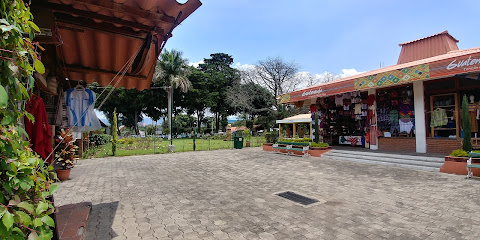
Boutique De Barcelona Guatemala
Explore Boutique De Barcelona in Guatemala City for unique fashion, artisan crafts, and a taste of local culture in every piece.

Arte y Folklore Galeria
Explore the vibrant world of Guatemalan art and culture at Arte y Folklore Galeria, your go-to souvenir store in Guatemala City.

Vennus Shop
Explore the vibrant styles of Vennus Shop in Zona 13, Guatemala City – where local fashion meets unique flair.

Infini
Discover Infini in Guatemala City: A charming general store offering local crafts, unique souvenirs, and a taste of Guatemalan culture.

Fancy Elephant
Discover unique clothing and accessories at Fancy Elephant, a fashion gem in the heart of Guatemala City, showcasing local craftsmanship and style.

Essential bars & hidden hideouts
Stixs Sport Bar
Experience the thrill of sports at Stixs Sport Bar in Guatemala City, where delicious food, great drinks, and live games come together for an unforgettable outing.

El Acueducto Sport Bar
Discover the vibrant atmosphere of El Acueducto Sport Bar in Guatemala City, perfect for sports fans and nightlife seekers alike.

Repo's Place
Discover the vibrant nightlife of Guatemala City at Repo's Place, a must-visit bar offering local drinks and a welcoming atmosphere.

La ultima y nos vamos
Discover La Ultima y Nos Vamos, a lively sports bar in Guatemala City, perfect for enjoying drinks and catching live sports events in a welcoming atmosphere.

Cyan
Explore the vibrant nightlife of Guatemala City at Cyan, a lively bar offering innovative cocktails and a unique cultural experience.

Aurora
Experience the vibrant nightlife at Aurora, a standout bar in Guatemala City, blending local flavors with a lively atmosphere.

Hola nubd
Discover the vibrant nightlife of Guatemala City at Hola nubd, where local drinks and a lively atmosphere await every visitor.

IceTails Guatemala
Experience the vibrant cocktail culture of IceTails Guatemala, where innovative drinks and a welcoming atmosphere await in the heart of the city.

El Farolito
Experience the vibrant nightlife of Guatemala City at El Farolito, a lively bar offering local drinks and a warm atmosphere for all visitors.

Garfio - Bar Restaurante
Discover the vibrant nightlife of Guatemala City at Garfio, where local flavors and lively ambiance come together for an unforgettable bar experience.

Local Phrases
-
- HelloHola
[oh-lah] - GoodbyeAdiós
[ah-dee-ohs] - YesSí
[see] - NoNo
[noh] - Please/You're welcomePor favor/De nada
[pohr fah-vohr/deh nah-dah] - Thank youGracias
[grah-see-ahs] - Excuse me/SorryDisculpe/Perdón
[dees-kool-peh/pehr-dohn] - How are you?¿Cómo estás?
[koh-moh ehs-tahs] - Fine. And you?Bien. ¿Y tú?
[byen. ee too] - Do you speak English?¿Hablas inglés?
[ah-blahs een-glehs] - I don't understandNo entiendo
[noh ehn-tee-ehn-doh]
- HelloHola
-
- I'd like to see the menu, pleaseMe gustaría ver el menú, por favor
[meh goos-tah-ree-ah behr ehl meh-noo, pohr fah-vohr] - I don't eat meatNo como carne
[noh koh-moh kahr-neh] - Cheers!¡Salud!
[sah-lood] - I would like to pay, pleaseMe gustaría pagar, por favor
[meh goos-tah-ree-ah pah-gahr, pohr fah-vohr]
- I'd like to see the menu, pleaseMe gustaría ver el menú, por favor
-
- Help!¡Ayuda!
[ah-yoo-dah] - Go away!¡Fuera!
[fweh-rah] - Call the Police!¡Llame a la Policía!
[yah-meh ah lah poh-lee-see-ah] - Call a doctor!¡Llame a un doctor!
[yah-meh ah oon dohk-tohr] - I'm lostEstoy perdido/a
[ehs-toy pehr-dee-doh/dah] - I'm illEstoy enfermo/a
[ehs-toy ehn-fehr-moh/ah]
- Help!¡Ayuda!
-
- I'd like to buy...Me gustaría comprar...
[meh goos-tah-ree-ah kohm-prahr...] - I'm just lookingSolo estoy mirando
[soh-loh ehs-toy meer-ahn-doh] - How much is it?¿Cuánto cuesta?
[kwan-toh kwehs-tah] - That's too expensiveEso es muy caro
[eh-soh ehs mwee kah-roh] - Can you lower the price?¿Puede bajar el precio?
[pweh-deh bah-har ehl pree-syoh]
- I'd like to buy...Me gustaría comprar...
-
- What time is it?¿Qué hora es?
[keh oh-rah ehs] - It's one o'clockEs la una en punto
[ehs lah oo-nah ehn poon-toh] - Half past (10)Media hora (10)
[meh-dee-ah oh-rah (dheez)] - MorningMañana
[mah-nyah-nah] - AfternoonTarde
[tahr-deh] - EveningNoche
[noh-cheh] - YesterdayAyer
[ah-yehr] - TodayHoy
[oy] - TomorrowMañana
[mah-nyah-nah] - 1Uno
[oo-noh] - 2Dos
[dohs] - 3Tres
[trehs] - 4Cuatro
[kwah-troh] - 5Cinco
[seen-koh] - 6Seis
[sehs] - 7Siete
[syeh-teh] - 8Ocho
[oh-choh] - 9Nueve
[nweh-veh] - 10Diez
[dyehs]
- What time is it?¿Qué hora es?
-
- Where's a/the...?¿Dónde está el/la...?
[dohn-deh ehs-tah ehl/lah] - What's the address?¿Cuál es la dirección?
[kwal ehs lah dee-rehk-syohn] - Can you show me (on the map)?¿Puede mostrarme (en el mapa)?
[pweh-deh mohs-trar-meh (ehn ehl mah-pah)] - When's the next (bus)?¿Cuándo es el próximo (autobús)?
[kwan-doh ehs ehl proh-see-moh (ow-toh-boos)] - A ticket (to ....)Un boleto (a ...)
[oon boh-leh-toh (ah ...)]
- Where's a/the...?¿Dónde está el/la...?
History of Zona 13
-
Zona 13 is situated near the ancient Maya civilization that thrived in the region, with archaeological evidence suggesting that the area was inhabited as early as 1000 BC. The nearby ruins of Kaminaljuyu demonstrate the advanced urban planning and societal organization of the Maya, influencing the cultural fabric of the area long before the Spanish conquest.
-
Following the Spanish conquest in the 16th century, the region that includes Zona 13 became part of the newly established Captaincy General of Guatemala. The introduction of Spanish colonial architecture and the establishment of Catholic missions had a lasting impact on the cultural landscape. This period saw the melding of indigenous and Spanish traditions, which can still be observed in local customs and religious practices.
-
In the late 19th and early 20th centuries, Zona 13 experienced significant urban development as Guatemala City expanded. The establishment of new residential areas and the influx of migrants seeking opportunities contributed to the neighborhood's growth. Notable infrastructure projects, such as the construction of roads and public buildings, marked this era and shaped the modern identity of the area.
-
The latter half of the 20th century was marked by political unrest and civil conflict in Guatemala, which affected Zona 13 as well. The neighborhood became a microcosm of the broader national struggles, with community organizations forming in response to socio-political challenges. The impact of the civil war, which lasted from 1960 to 1996, is still felt in the community's resilience and ongoing efforts for social justice.
-
In recent years, Zona 13 has witnessed a cultural renaissance, with a focus on community initiatives aimed at revitalizing the neighborhood. Local artists and cultural groups have emerged, promoting traditional crafts, music, and dance. This resurgence is complemented by the neighborhood's rich culinary scene, which showcases traditional Guatemalan dishes, reflecting the diverse cultural heritage of the area.
Zona 13 Essentials
-
Zona 13 is accessible from various neighborhoods in Guatemala City. You can take a taxi or an Uber for convenience, as public transport options may not directly serve this area. If you are coming from the historic center, a taxi ride will take approximately 20 minutes. Alternatively, you can use the Transmetro bus system, which connects several neighborhoods and has a stop nearby, but check the latest routes and schedules for accuracy.
-
Getting around Zona 13 is best done by foot or taxi. The neighborhood is relatively small, making it easy to explore on foot. However, for longer distances or to reach attractions outside the neighborhood, taxis are readily available. Public transport options such as minibuses can also be used, but they may not be as comfortable or reliable.
-
Zona 13 is generally safe during the daytime, but caution is advised, especially at night. Areas further from the main tourist sites may have higher crime rates. It’s recommended to avoid wandering into the neighboring districts that are known for higher crime rates, particularly after dark. Always keep your belongings secure and be mindful of your surroundings.
-
In case of emergencies, dial 110 for police assistance or 127 for medical emergencies. There are hospitals and clinics in Guatemala City that can provide medical care if needed. It is advisable to have travel insurance that covers emergencies. Always keep a list of emergency contacts handy.
-
Fashion: Do wear comfortable clothing suitable for walking. Avoid flashy jewelry. Religion: Do respect local customs, especially near churches or religious sites. Public Transport: Do be courteous to fellow passengers. Don't engage in loud conversations or eat on public transport. Greetings: Do greet locals with a friendly smile or a handshake. Eating & Drinking: Do try local dishes and enjoy street food. Don't refuse food offerings, as this might be seen as rude.
-
To experience Zona 13 like a local, visit the local markets where you can find fresh produce and artisanal goods. Engage with the street vendors who often have stories to share about their products. Explore the murals and street art which are a significant part of the neighborhood’s culture. If you have the chance, join community events or festivals to immerse yourself in local traditions.
Trending Landmarks in Zona 13
-
Zoológico La Aurora
-
Plaza Obelisco
-
Plaza Berlín
-
Torre del Reformador
-
The Children's Museum of Guatemala
-
Nacional Museum of Mayan Art: Archeology and Ethnology
-
Handcrafts Market
-
Monumento Tecún Umán
-
Plaza Colombia
-
Acueducto de la serpiente
-
Acueducto de Pinula
-
Mural esteriores Zoologico la Aurora y 12 calle zona 13










